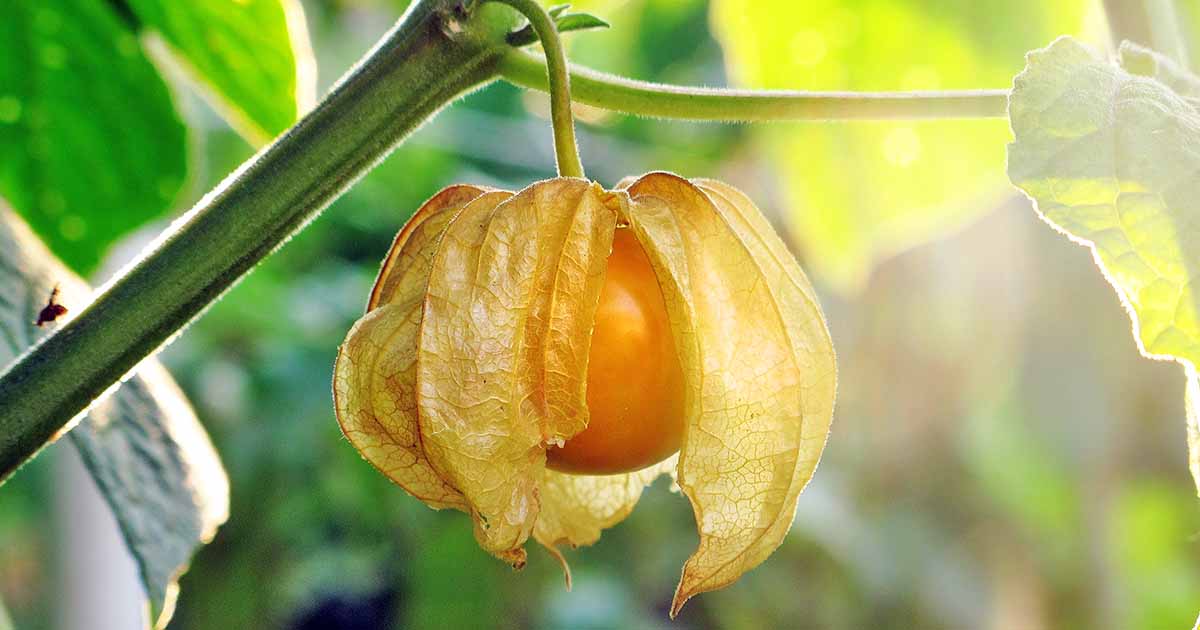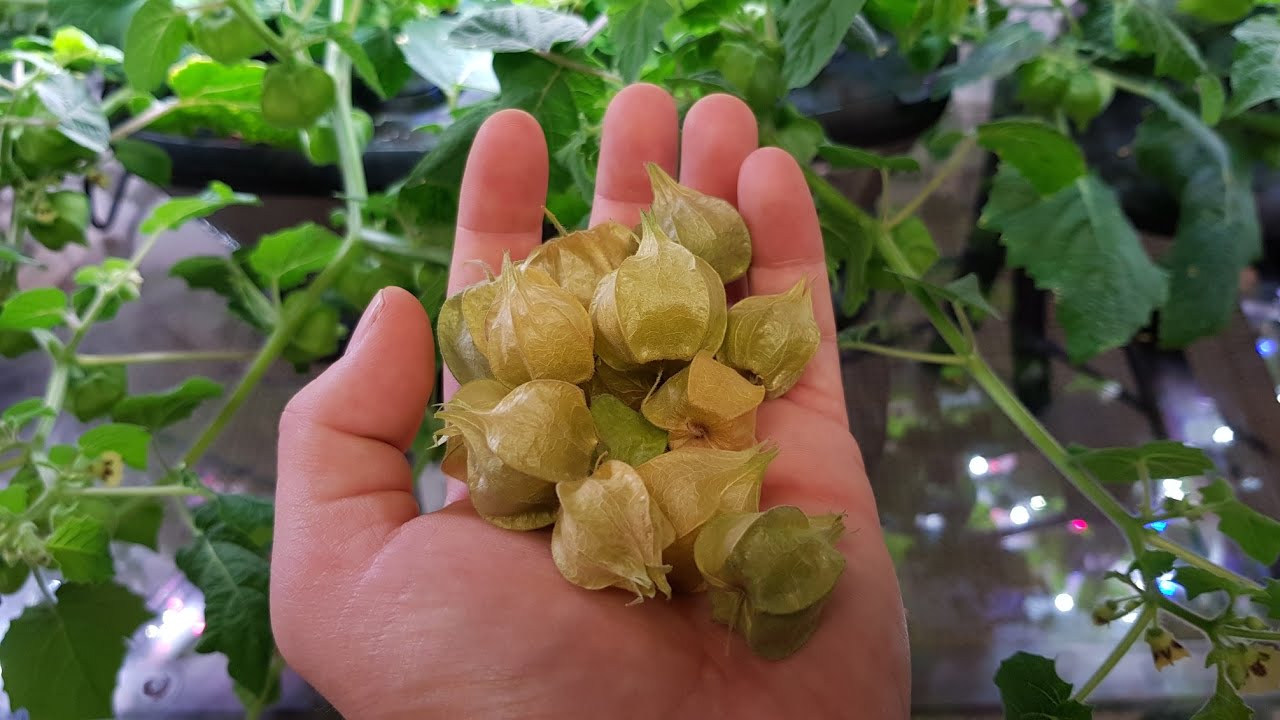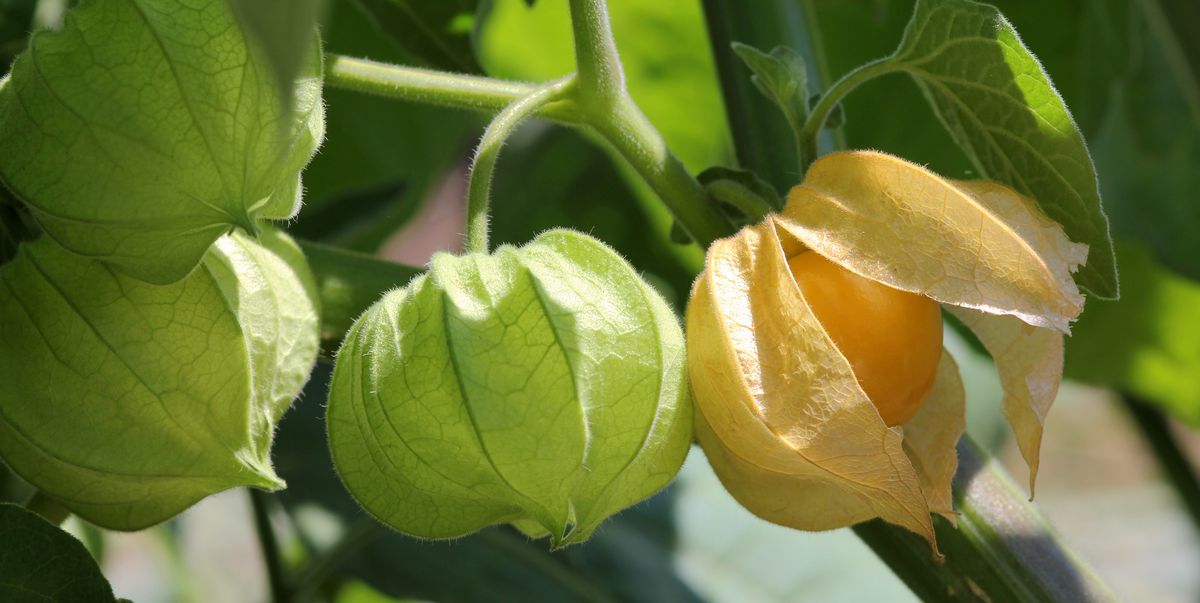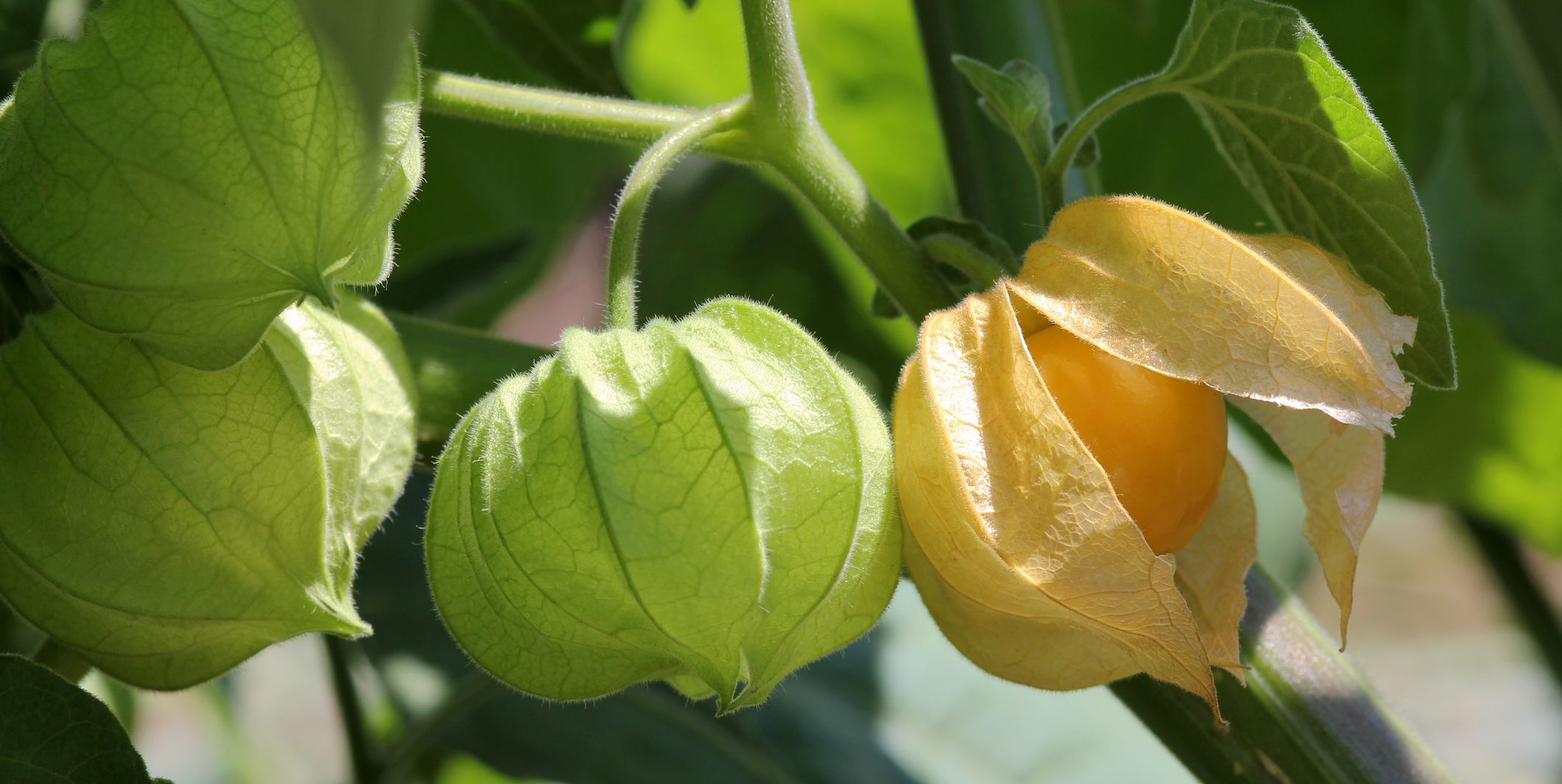Knowing when to pick ground cherries is essential in order to enjoy their delicious taste at their peak ripeness. Ground cherries, also known as husk cherries or cape gooseberries, are small, round fruits that grow inside papery husks. When they are fully ripe, ground cherries boast a sweet and tropical flavor, making them a delightful addition to both sweet and savory dishes. However, picking ground cherries too early will result in a tart and underwhelming taste, while waiting too long may lead to overripe and mushy fruits. This article will guide you through the signs that indicate the ideal time for picking ground cherries, ensuring that you savor their full flavor and enjoy their unique texture.

Factors to Consider
Ripeness Indicators
Determining the right time to pick ground cherries involves considering several factors, the first being ripeness indicators. Ground cherries go through various stages of ripeness, and understanding these indicators will help ensure that you harvest them at the optimal time. By closely examining the following aspects of ground cherries, you can determine their level of ripeness: color, size and firmness, taste, and days since flowering.
Color
Color serves as one of the primary indicators of ground cherry ripeness. As these fruits mature, they transition from a greenish hue to a vibrant golden or yellow color. When the ground cherries reach a uniformly golden color, it is a reliable sign that they are ripe and ready for harvest. Any fruit that is still predominantly green should be left on the plant to continue ripening.
Size and Firmness
Another factor to consider when picking ground cherries is their size and firmness. Mature ground cherries tend to be about the size of a marble or slightly larger. Additionally, they should have a firm texture when gently squeezed. If the fruits are still small and firm, it is an indication that they need more time to develop their flavor and sweetness. On the other hand, if the fruits are excessively soft or shriveled, they may be overripe.
Taste
Taste is an essential aspect when determining the ripeness of ground cherries. These fruits develop their unique flavor profile as they mature, transitioning from a slightly tart taste to a harmonious combination of sweetness and tartness. To determine the optimal ripeness, sample a fruit or two from different parts of the plant. If the taste is overly tart or lacks sweetness, the ground cherries may need more time to mature. However, if they are pleasantly sweet and slightly tart, they are likely ready to be harvested.
Days Since Flowering
Monitoring the number of days since flowering is another critical factor in determining when to pick ground cherries. Ground cherries typically take around 60 to 70 days from the time of flowering to reach their peak ripeness. Keep track of this timeline and use it as a general guideline when considering the maturity of the fruits. However, it is essential to remember that external factors such as weather conditions may affect the exact timing, so always rely on visual cues and taste as the final decision-making factors.
Timing
Harvest Time
Understanding the optimal harvest time for ground cherries is crucial to ensure you enjoy the highest quality fruits. The ideal time to harvest ground cherries is when they are fully ripe but not overripe, offering the perfect balance of flavor and texture. To make the most informed decision, consider both the ripeness indicators and visual cues discussed earlier. By combining these factors, you can select the fruits at their peak flavor and readiness.
Early Harvest
In some cases, you may need or choose to harvest ground cherries earlier than their optimal ripeness. Early harvesting is necessary if you anticipate unfavorable weather conditions or if the fruits are showing signs of damage or disease. While these fruits may lack the full flavor development that occurs in fully ripe ground cherries, they can still be enjoyed and utilized in various culinary preparations.
Late Harvest
Conversely, a late harvest may occur if the ground cherries have been left on the plant for an extended period. While there is a risk of overripeness and deterioration in flavor and quality, late harvesting can be useful if you prefer a more concentrated sweetness. However, it is crucial to monitor the fruits closely to prevent any signs of decay or softening past the ideal stage.
Visual Cues for Ripeness
Golden Husk
The visual cues provided by the husk can help indicate the ripeness of ground cherries. As the fruits mature, the husks will turn from a pale green to a golden or yellow color. This transformation is a reliable indicator that the ground cherries are ready for harvesting. Keep in mind that not all varieties of ground cherries undergo this distinctive color change, so additional cues should be considered.
Dry Husk
Another visual cue to consider is the dryness of the husk. As ground cherries ripen, the husks have a tendency to dry out and become papery in texture. While this is not a foolproof indicator on its own, it can serve as a supporting clue alongside other ripeness indicators. If the husks are still green and moist, it suggests that the ground cherries may need more time to develop their flavor and sweetness.
Husk Cracking
Husk cracking is another visual cue that signifies that the ground cherries are ripe. As the fruits mature, the husks may begin to crack or split open naturally. This is particularly common when ground cherries are left on the plant for an extended period. If you notice husk cracking, it is a strong indication that the ground cherries are ready to be harvested and enjoyed.
Physical Characteristics
Fully Rounded Fruit
When picking ground cherries, look for fruits that have fully rounded shapes. A mature ground cherry should resemble a small, round globe with a smooth surface. If the fruits are still small and elongated or have uneven shapes, they may not have reached their optimal ripeness. It’s important to allow these fruits additional time to develop and achieve their characteristic round form.
Firm Texture
Ground cherries should have a firm texture when ripe. Gently squeeze the fruits to assess their firmness. If they are too soft or mushy, it indicates that they may be overripe and past their prime. On the other hand, if the fruits are notably hard or have a rock-like texture, they may be underripe. Aim for ground cherries that are just slightly soft to the touch, indicating their perfect ripeness.
Uniform Size
Uniformity in size is another important physical characteristic to consider when picking ground cherries. Ripe ground cherries should be relatively consistent in size, with most fruits falling within a certain range. This uniformity is an indication of even ripening and optimal flavor development. If you notice fruits that are significantly smaller or larger than the majority, they may require additional time on the plant to reach their full ripeness.
Flavor Development
Sweetness
The development of sweetness is a crucial aspect of ground cherry ripeness. As the fruits mature, they undergo a transformation in flavor, transitioning from a slightly tart taste to a desirable sweetness. When picking ground cherries, sample a fruit or two to assess their sweetness. If the taste is overly tart or lacks the desired sweetness, it suggests that the fruits need more time to reach their full flavor potential. Conversely, ground cherries that offer a pleasing balance of sweetness are ready for harvesting.
Tartness
While sweetness is an important flavor characteristic, ground cherries also have a pleasant tartness that complements their overall taste. The ideal ground cherry should have a hint of tartness, providing a complex flavor profile. When evaluating the fruit’s tartness, consider your personal taste preferences and the intended use for the ground cherries. Ground cherries with a well-balanced tartness are perfect for various culinary applications, such as jams, pies, or simply enjoying them fresh.
Days Since Flowering
Maturation Period
The number of days since flowering plays a significant role in determining the optimal harvest time for ground cherries. On average, ground cherries take approximately 60 to 70 days to reach their peak ripeness from the time of flowering. It is vital to keep track of this timeline as a general guide for when to expect the fruits to be fully mature. However, it is important to note that individual plants and environmental factors can influence the exact maturation period, so be sure to rely on other ripeness indicators as well.
Fruit Development
Observing the progression of fruit development is essential for determining the ripeness of ground cherries. From the time of flowering to the moment they are ready for harvesting, ground cherries undergo significant transformations. Initially, the fruits appear as small green globes, gradually growing larger and transitioning to their characteristic golden color. As you monitor the fruits, you will notice changes in their texture and firmness, indicating their progress towards ripening. Regular observations and comparisons to the ripeness indicators discussed earlier will help you pinpoint the opportune time for harvest.

Monitoring Growth
Checking Regularly
To ensure that you don’t miss the ideal harvest time, it is crucial to check your ground cherries regularly. Make a habit of examining the fruits for ripeness indicators and physical characteristics at least every few days. By staying vigilant and proactive in monitoring their growth, you can harvest ground cherries at their prime and enjoy their exceptional flavor.
Frequent Observations
Frequent observations are necessary to track the progression of ground cherry ripening. As mentioned earlier, ground cherries go through various stages from flowering to fully mature fruits. By making regular observations, you can identify significant changes in color, size, and firmness, allowing you to determine the optimal time for picking. Additionally, tracking the days since flowering will give you a sense of how far along the fruits are in their development.
Harvest Methods
Hand Picking
One of the most common and effective harvest methods for ground cherries is hand picking. This method involves carefully plucking the ripe fruits directly from the plant. To ensure minimal damage to the fruits and the plant, grasp the husk firmly and gently detach it from the stem. Hand picking allows you to be selective, ensuring that only the fully ripe ground cherries are harvested while leaving the underripe ones to continue developing.
Using Scissors or Pruners
Using scissors or pruners is another viable method for harvesting ground cherries, particularly if the plants are large or dense. This method is especially useful when dealing with ground cherries that are in hard-to-reach areas or clustered together. Hold the husk or stem in one hand and carefully snip it with the scissors or pruners, ensuring minimal damage to the surrounding plant. Be cautious not to crush or bruise the fruits during this process.

Storage and Shelf Life
Post-Harvest Handling
Proper post-harvest handling is crucial for preserving the quality and extending the shelf life of ground cherries. After harvesting, remove any damaged or overripe fruits to prevent them from affecting the others. Gently wash the ground cherries with cool water to remove any dirt or debris. To ensure optimal taste and texture, it is generally recommended to leave the husks intact until immediately before consuming or using the fruits in recipes.
Storage Conditions
Ground cherries should be stored in suitable conditions to maintain their freshness. Ideally, store them in a cool, dry place away from direct sunlight. A well-ventilated area or refrigerator with a temperature of around 50 to 55°F (10 to 13°C) is ideal for keeping ground cherries fresh for several weeks.
Shelf Life Expectancy
When properly stored, ground cherries can have a shelf life of approximately two to three weeks. However, it is important to regularly monitor the fruits for any signs of spoilage or decay. Ground cherries have a delicate nature, and even minor damage can accelerate their deterioration. To enjoy their optimal flavor and texture, it is advisable to consume the ground cherries within a few days of harvesting.
Overripe Ground Cherries
Signs of Overripeness
Despite your best efforts, some ground cherries may become overripe. It is important to recognize the signs of overripeness to prevent wasting these fruits. Overripe ground cherries may exhibit a combination of the following characteristics: discolored husks, soft or wrinkled fruit, and an overly sweet or fermented taste. If you notice these signs, it is best to discard the overripe ground cherries to avoid compromising the quality of other fruits.
Discolored Husks
One of the primary signs of overripeness in ground cherries is discolored husks. As the fruits become overripe, the husks may turn brown or even black in some cases. This discoloration is a clear indication that the ground cherries are beyond their peak ripeness and may have started to deteriorate.
Soft or Wrinkled Fruit
Overripe ground cherries often develop a soft or wrinkled texture. The flesh of the fruit may feel mushy when gently squeezed, and the overall appearance will likely appear less taut and firm. These changes in texture occur as the fruits begin to break down, signifying their diminished quality.
In conclusion, the picking of ground cherries involves considering various factors to ensure that they are harvested at their optimal ripeness. By assessing ripeness indicators such as color, size and firmness, taste, and days since flowering, you can make an informed decision on when to pick these delicious fruits. Visual cues such as a golden husk, dry husk, and husk cracking further aid in determining their readiness. Physical characteristics, including fully rounded fruit, firm texture, and uniform size, also provide valuable insights into their ripeness. Flavor development, particularly sweetness and tartness, is another key aspect to consider. Monitoring the growth of ground cherries by checking regularly and making frequent observations is essential to identify the ideal harvest time. When it comes to harvesting methods, hand picking and using scissors or pruners are both effective options. Proper post-harvest handling, storage conditions, and monitoring the shelf life of ground cherries ensure their freshness and maximize their enjoyment. Recognizing the signs of overripeness, such as discolored husks and soft or wrinkled fruit, allows for efficient utilization and avoids wasting any precious ground cherries. By following these guidelines, you can confidently pick ground cherries at their peak quality and savor their delectable flavor.



